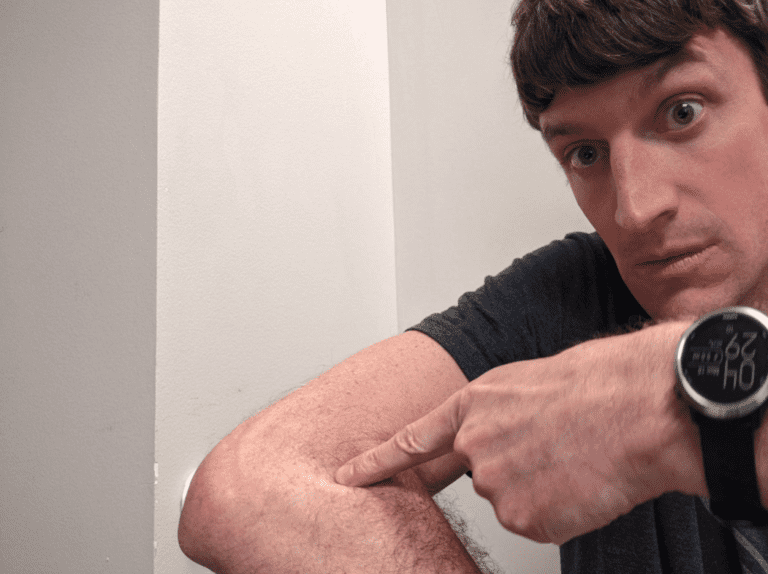If you’re a pickleball player and ever suffered from elbow pain, then you know how disruptive an elbow injury can be. It will not only prevent you from gripping your paddle, but it can make tasks such as opening a jar or a door downright excruciating.
People suffer from elbow pain for way too long, and many people will be dealing with a “Tennis Elbow”-type injury for years. Much of this is unnecessary suffering, as the right management strategy can help restore healing and full function back to your arm.
Why Does My Arm Hurt After Pickleball And What Causes Pickleball Elbow?
If you are experiencing pain in your arm after playing pickleball, you’re most likely suffering from Lateral Epicondylitis, more commonly known as Pickleball Elbow or Tennis Elbow. Pickleball Elbow is the number one cause of outer elbow pain in Pickleball players.
The condition is usually caused by small micro tears in your elbow’s tendons, which can occur with incorrect form when hitting the ball and/or overuse of your forearm muscles during a match. It can also be caused by too many backhanded shots with the wrong form and repetitive motion.
What Are the Differences Between Pickleball Elbow and Tennis Elbow?
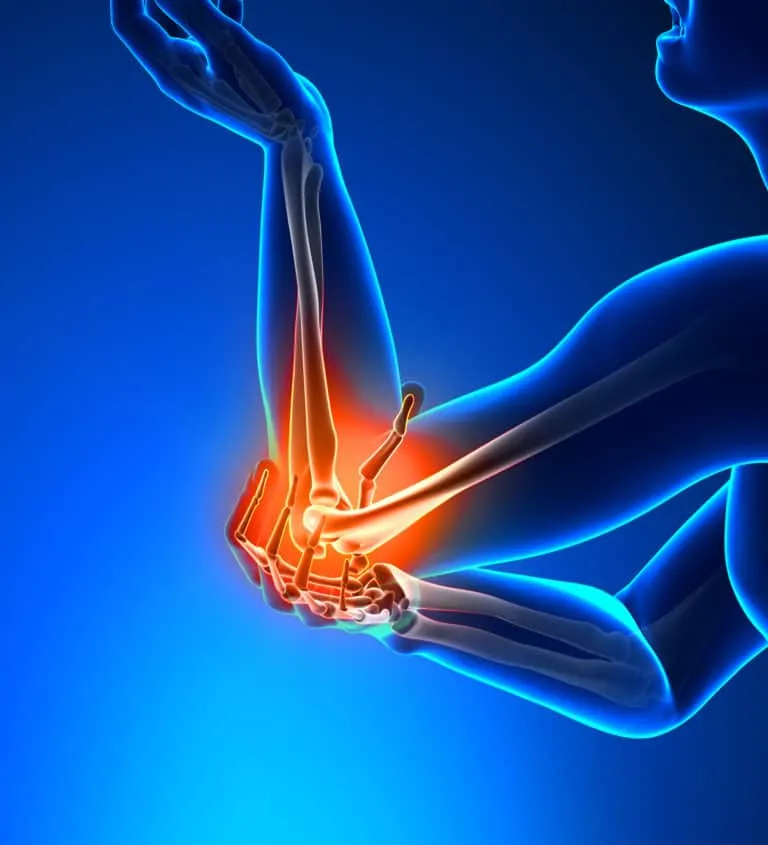
Pickleball Elbow is very similar to Tennis Elbow, as both cause pain that occurs on the outside of the elbow, and can travel down your forearm and to the wrist. The same muscles are involved in both cases; the wrist extensor muscle group.
If you’re a pickleball player and are suffering from pain on the outside of your elbow, then you likely have a case of Lateral Epicondylalgia, otherwise known as “Tennis Elbow” but, since you’re an avid pickleball player, you can call it “Pickleball Elbow.”
Tennis Elbow is the most popular term used to describe lateral elbow pain. If you suffer from medial elbow pain, this is referred to as “Golfer’s Elbow”. Golfer’s Elbow involves the wrist flexor muscles vs the wrist extensor muscles.
The medical community uses the diagnosis of lateral epicondylitis, or lateral epicondylalgia depending on the length of time you have had the injury. Lateral epycondylitis infers that there is an “inflammatory response” at the site of injury.
The inflammatory response will conclude typically within a few weeks after the original injury.
When pain persists beyond the inflammatory time period, it is considered that you now have lateral epicondylalgia. The inflammatory cycle has passed and you’re left with a weakened tendon. This may all sound like semantics, but it actually makes a huge impact when developing a treatment plan- as each stage of recovery and healing should be addressed differently.
Can I Get Pickleball Elbow Or Tennis Elbow If I Don’t Play Either Sport?
We see many people who develop elbow pain after overworking their forearms. A common scenario is in the spring time, when people start gardening, pulling weeds, and doing more yard work. These types of activities involve the forearm muscles and will place a lot of strain on the wrist extensor tendon.
A hard weekend of clearing out the flower beds will often lead to Tennis Elbow-type pain.
Many people will develop Tennis Elbow or Pickleball Elbow having NEVER picked up a racquet or a paddle. So, yes, you can get “Tennis Elbow” having NEVER played tennis or pickleball.
What Are The Symptoms Of Pickleball Elbow?
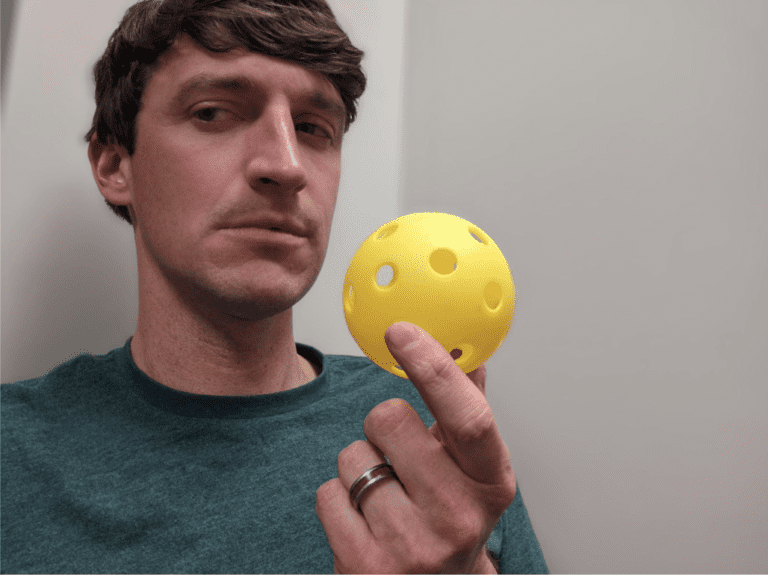
Pickleball Elbow causes discomfort and pain, which can drastically worsen over time if left untreated. The main symptoms of Pickleball Elbow include:
- Soreness & weakness in forearm and/or elbow area.
- Sharp or burning pain on outside of the elbow.
- Elbow stiffness.
- Reduced range of motion.
- Pain when gripping & lifting.
- Point tenderness on the lateral aspect of the elbow.
When Am I Most Likely To Get A Pickleball Elbow Injury?
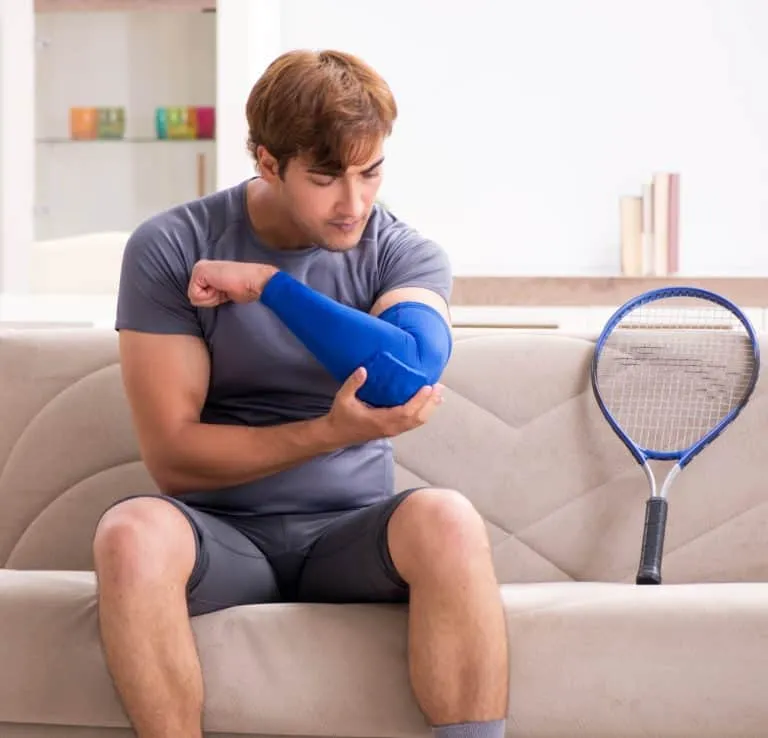
If you increase the demand of a particular muscle group beyond its capacity, then an injury will likely occur.
When is this most likely to happen?
First consider how often you play pickleball and for how long. The longer and more often you play will overall increase your volume of paddle swings.
If you go from playing 2-days per week up to 5-days a week, then you are asking your body to sustain a greater load. If your body, or certain muscles, like your forearm muscles, aren’t up to the task then you are likely to create an overuse injury.
Also, you have to consider if you add a tournament or special event to your routine. This increase in load could create an injury if your body isn’t prepared for the increased load and volume.
If you want to play pickleball more, then consider ramping up your volume slowly over a period of time to avoid a drastic increase in strain to your arm. If you take a break from pickleball for a season, then you will likely need to gradually work yourself back in to give your body time to adjust.
Changing equipment, especially your paddle will also influence the strain on your elbow. A paddle difference could be subtle, but the more you play, the more of an impact this could make.
Instead of switching to a new paddle completely, consider a rotation.
Hang on to your older paddle and then you can slowly wean off the older paddle to the new one to give your arm a better chance to adjust to the changes. If you’re a high volume pickleball player, this is a tip you should strongly consider.
Can I Still Play Pickleball With Pickleball Elbow?
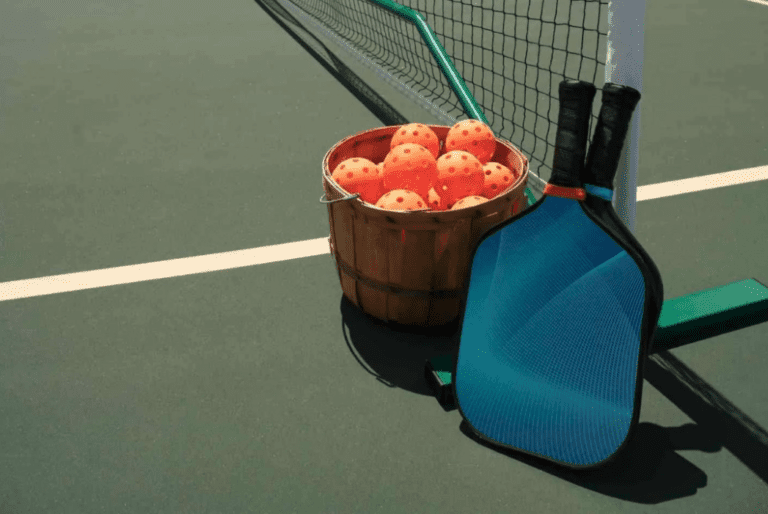
The more you use your elbow without any sort of treatment, the worse it will likely get. This doesn’t mean you can’t play, but you should consider early treatment to resolve the issue before you get to a point where the pain prevents you from playing.
Listen to your body, and I advise against playing through strong or intense levels of pain. Pain has a purpose and its purpose is to alert you when something is wrong.
If you completely ignore these “alerts” and don’t make adjustments or modifications, then it is likely to get worse with time. You should consider taking active steps towards healing it.
What is the Best Paddle to Use That Could Help Prevent Pickleball Elbow?
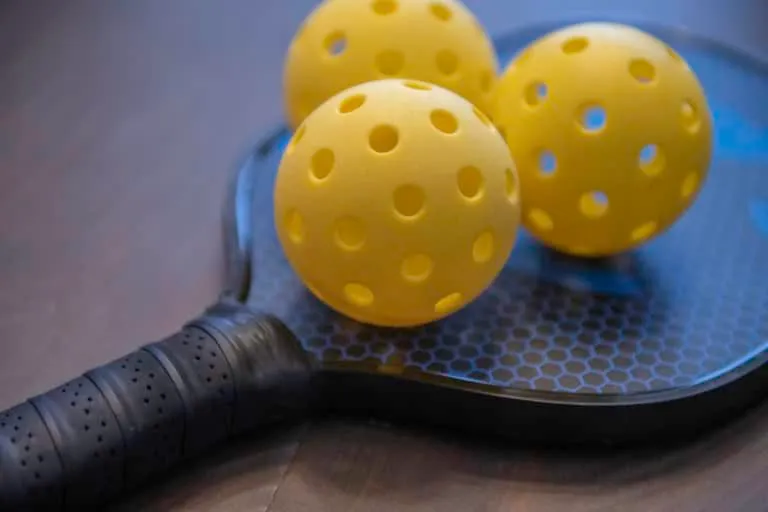
A heavy paddle gives you little control, but more power, while a light paddle gives you more control with less power.
The ability to have more control is important when preventing Pickleball Elbow, due to the fact that you will be able to better control how your arm swings, which is vital in preventing Pickleball Elbow.
The best paddle to use that could help prevent Pickleball Elbow would be a lighter paddle with a thicker handle, for it will reduce vibration and be easier on your arm.
Specifically, the Players Pickleball Rogue 2, the Gearbox (GX5), and Pro Kennex are all paddles that have been shown to successfully prevent and/ or alleviate Pickleball Elbow.
These paddles are more balanced, and they dampen the vibration that occurs when the ball hits the paddle.
A paddle that dampens vibration is extremely important because vibration to the arm can cause (and dramatically worsen) Pickleball Elbow. This might not solve a more severe case of Pickleball Elbow, but can at least help to improve the amount of vibration stress at the elbow.
If you are happy with the paddle that you have now, or just want to take extra precautions, try wearing a compression sleeve.
A compression sleeve will increase blood flow to your arm and further prevent vibrations that could lead to sprains and soreness. If you are already dealing with pain, a compression sleeve can reduce swelling and minimize the chances of further injury.
Aside from compression sleeves and paddles, two things that pickleball players recommend for pain and prevention is the Tenex Elbow Shock Absorber and the BAND IT elbow brace. The Tenex Elbow Shock Absorber has been shown to prevent shock to the elbow. The BAND IT elbow brace has been shown to enhance natural healing by using magnetic pads
ProBand BandIT XM utilizes magnetic pads to enhance natural healing in the area of the elbow.
How Can I Treat Pickleball Elbow?
- Activity Modification: The first thing you should consider is the overall amount of pickleball you play. Do you play pickleball most everyday? If you do, then you may consider taking days off from pickleball and doing other activities. Rest is very important in order to get back to feeling better. As much as you may want to go ahead and get back out on the court, this will only make your condition worse.
- Ice & Pain Relievers: If you are looking to alleviate your pain, ice has been proven to help. Just 15 minutes of ice on the elbow three times a day will ultimately improve the affected area. Pain relievers such as Ibuprofen and Aleve can also alleviate pain.
- Exercises: You want to focus on strengthening your forearm muscles 1st. But also increasing strength in your shoulder and upper back will likely help as well.
- The Tyler Twist: A great exercise you can do to alleviate pain and improve your Pickleball Elbow is called “The Tyler Twist”. The Tyler Twist strengthens your forearm through a flex bar. Please click on the video below for a demonstration of the different variations of the Tyler Twist.
- Physical Therapy: The good news is that Pickleball Elbow usually gets better on its own, but this is not always the case. If home remedies are not improving your Pickleball Elbow, it might be time to try physical therapy here at Simply Physio. We can analyze your form, determine the best way for you to reduce stress on the affected elbow and teach you personalized exercises that you can do so that you can get back out on the court.
Want to try one more “home remedy” treatment before reaching out to a local physical therapist? This door frame exercise helps many of my clients:
If you would like to get started on improving, alleviating, and preventing Pickleball Elbow, please book a FREE discovery visit with us today.
How Can I Prevent Pickleball Elbow From Happening Again in the Future?
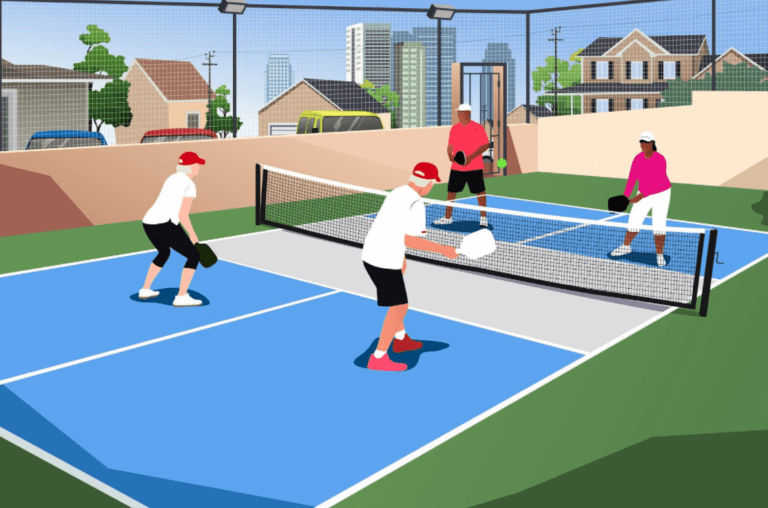
Pickleball Elbow can be avoided through:
- Limiting Wrist Action and make sure you hit the ball using your whole arm and body
- Warming up & Stretching Before Playing Pickleball
- Exercising (Grip Exercising)
- Taking breaks
- Physical Therapy if symptoms are worsening and your pain level prevents you from self treatment
Warming up before playing Pickleball is vital for preventing injury, specifically Pickleball Elbow.
To warm up, mimic the moves that you usually make on the court for about 5 to 10 minutes. It is important to get your heart rate and body temperature up. Be sure to stretch after your warm up, take breaks when playing, and limit your wrist action.
Another important note is that when you are playing pickleball, swing from your shoulder instead of your wrist and elbow, as flicking your wrist and snapping your elbow only adds strain to your elbow.
Overuse elbow pain injuries can be crippling and really limit or prevent you from playing pickleball. Most people suffer from pickleball elbow for way too long because they try to ignore the pain and keep playing through the pain.
Be smart and listen to your body. If you take my recommendations above and still find yourself not able to fully recover, then your injury is likely more complicated and it would be best to ask an expert to evaluate your condition, rather than suffer through needless years of limited recreation and pain.
For more information or help with Pickleball Elbow, please give us a call or text us.

